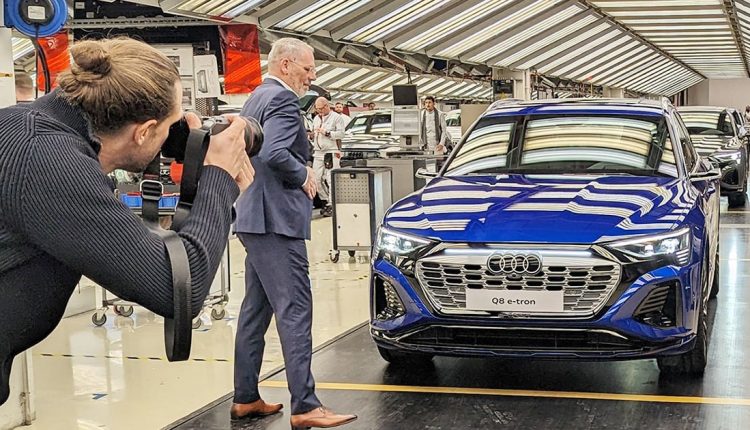Not all the changes from the E-tron to the Q8 E-tron happened on the assembly line. A major one involved the battery cells.
The E-tron’s initial cells came from supplier LG. Now, they come from Samsung SDI, with a different chemistry and improved anodes and cathodes.
The result is a much more competitive range for the Q8 E-tron — up to 600 kilometers under the Worldwide Harmonised Light Vehicle Test Procedure cycle used in Europe.
When the Q8 E-tron arrives in the U.S. later this year, Audi of America anticipates at least a 30 percent range increase over the current-generation E-tron — 222 miles for the more aerodynamic sportback version and 218 miles for its traditionally shaped counterpart under the more stringent EPA test cycle. The boost would put the Q8 E-tron much closer to a 300-mile range.
Audi Brussels, which has been net carbon neutral since 2018, gets its battery cells from a plant almost 900 miles away in Göd, Hungary, near Budapest, shipping them by electric train. “We used to ship them by truck, but switching to the train saves us about 2,600 tons of CO2 per year,” said Jan Marls, head of production at Audi Brussels.
VW may eventually employ a similar strategy if it sets up a battery plant in Canada, as planned, but continues to assemble its electric vehicles in Tennessee and Mexico.
The battery assembly plant in Brussels operates two shifts of 100 workers each accompanied in their tasks by scores of towering yellow Fanuc robots. Plant officials including Germann and Marls wouldn’t disclose its full run rate but said that last year, Audi Brussels produced about 43,000 E-trons during industrywide supply constraints.
That figure will likely increase this year with production of the Q8 E-tron, as well as the addition of the smaller Q4 E-tron, which will join the Q8 on the line in the second half of the year while it continues to be built in Zwickau, Germany, as well.


